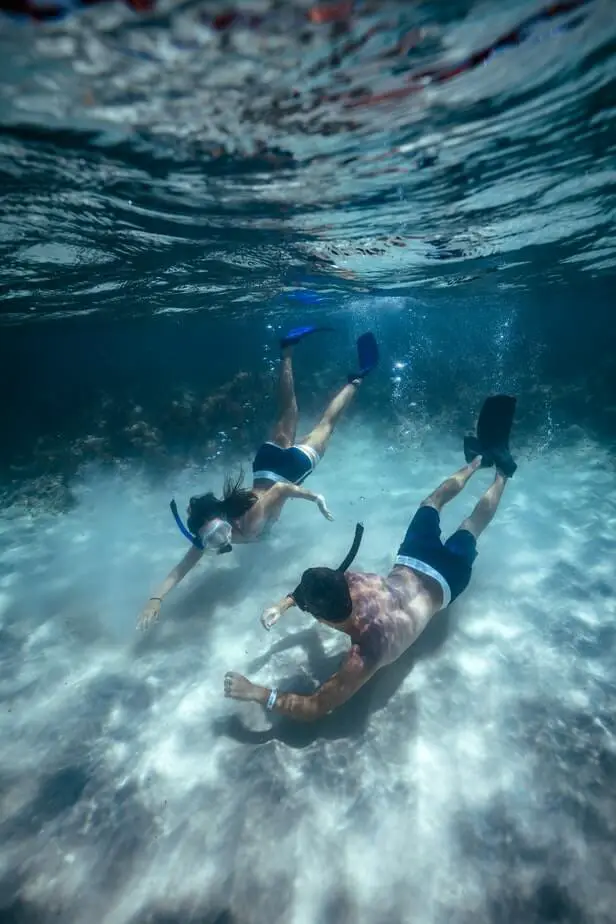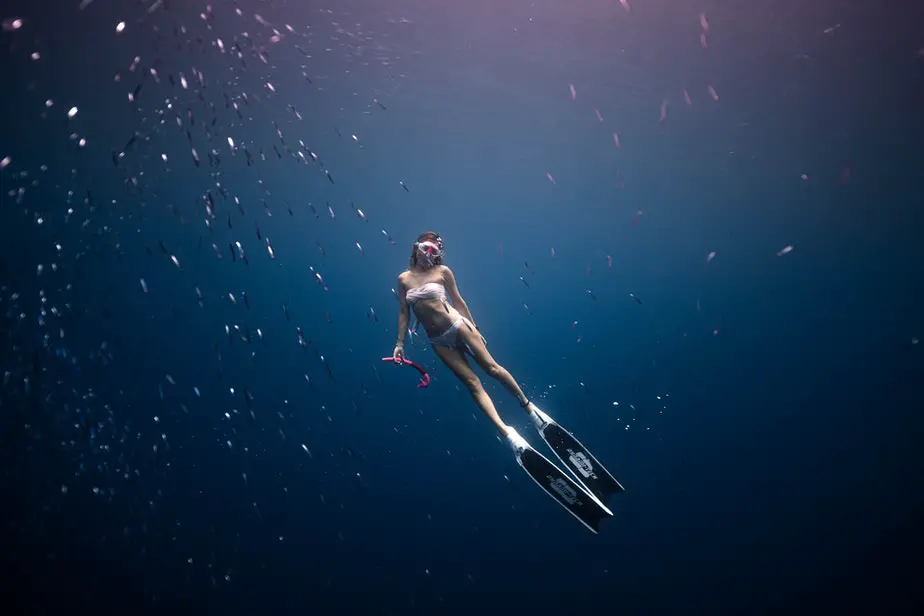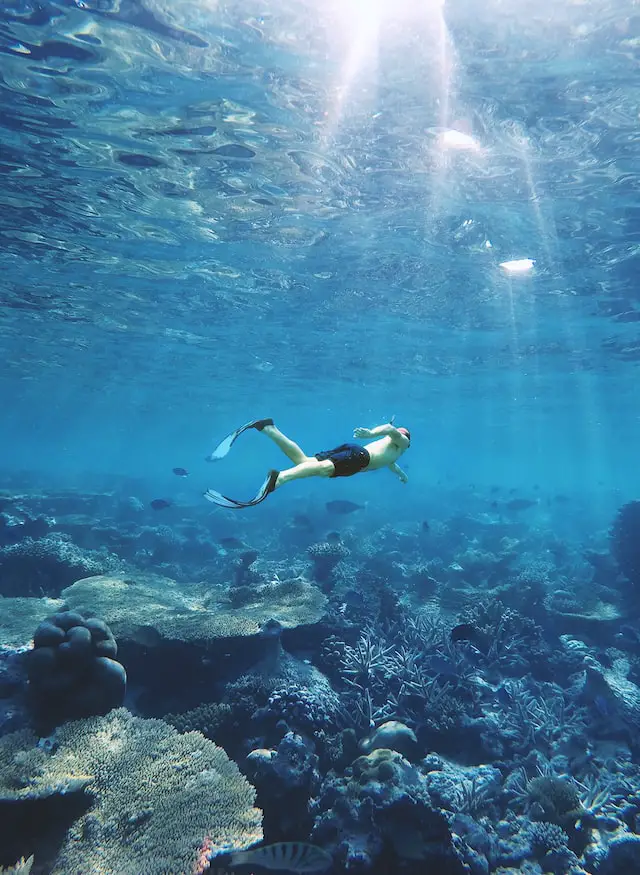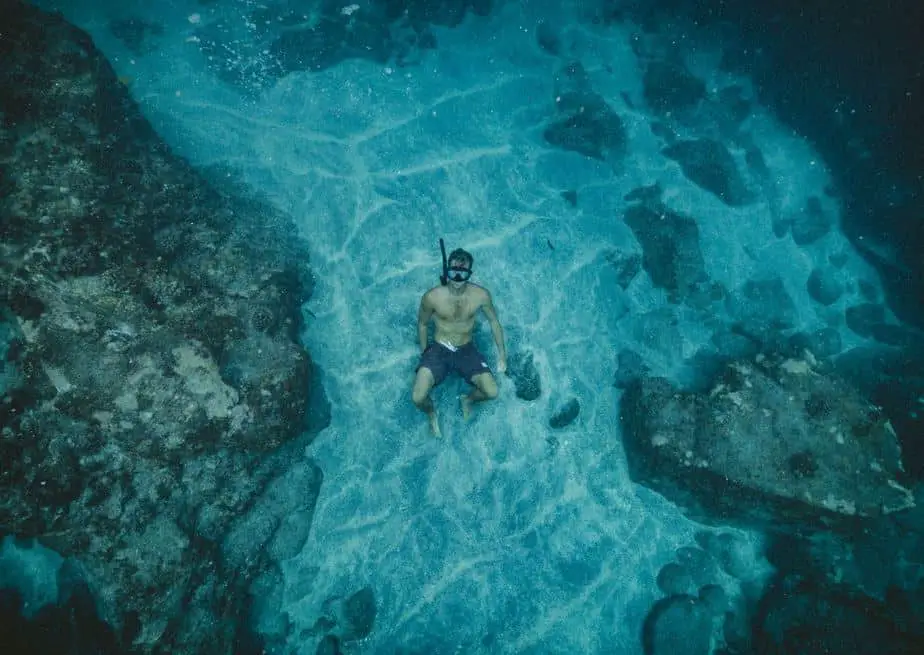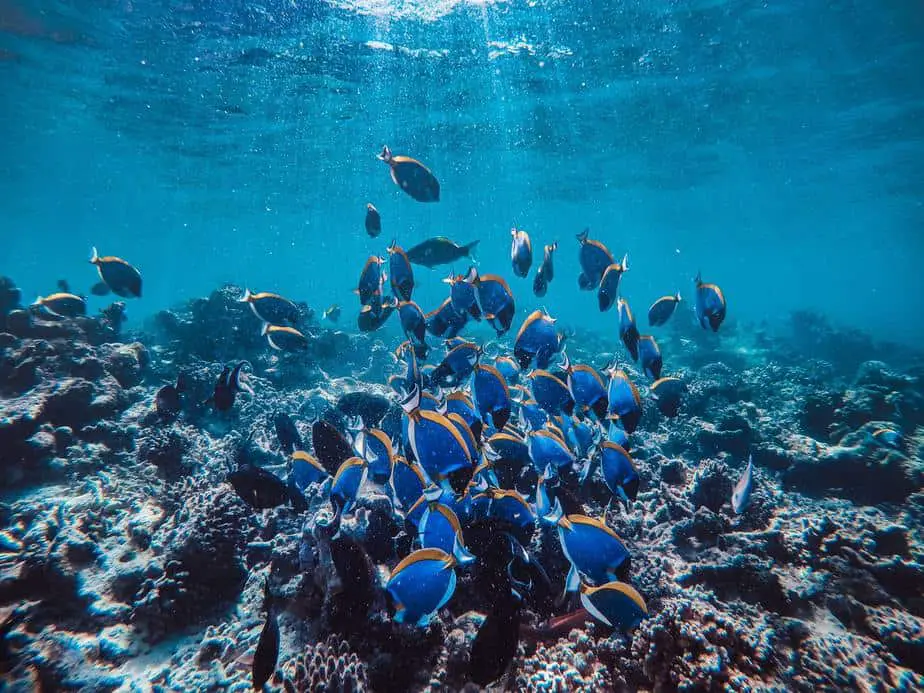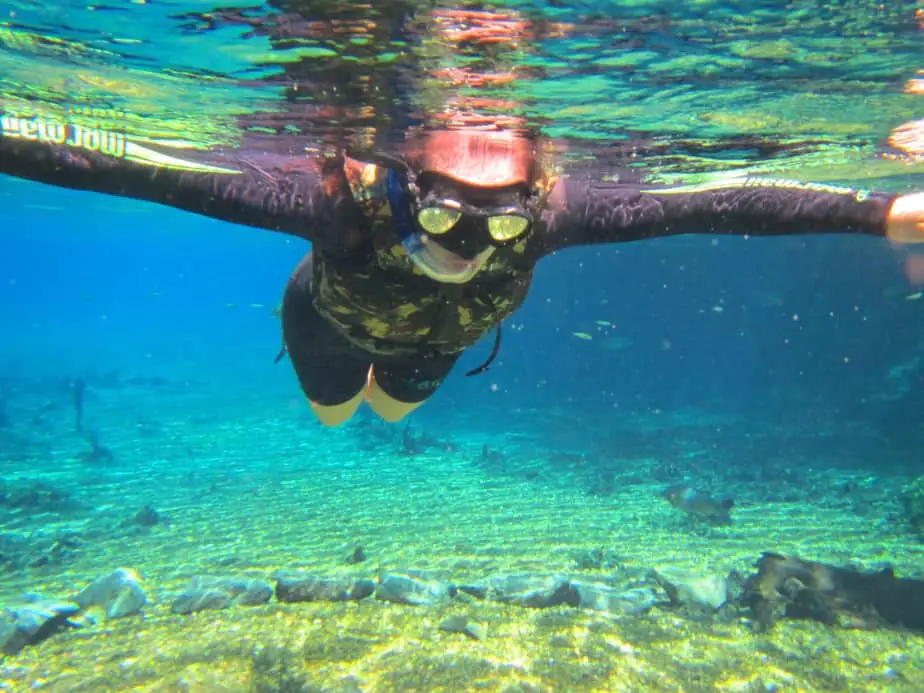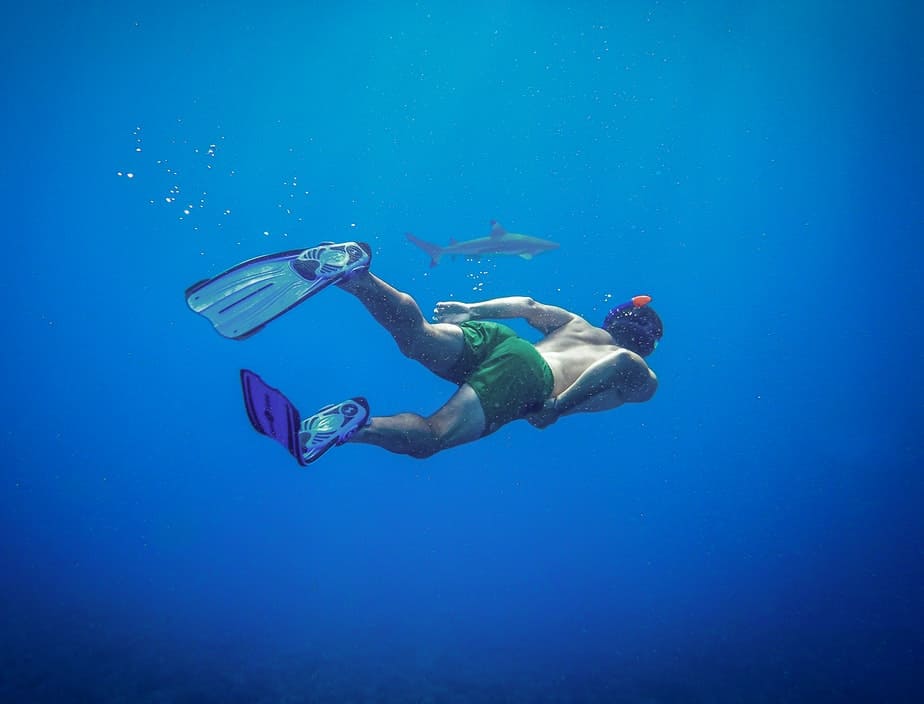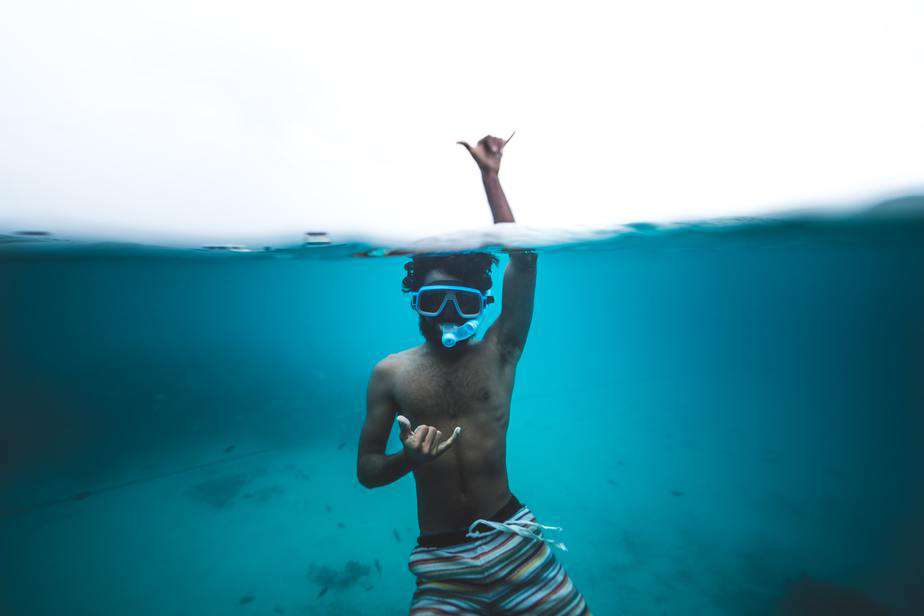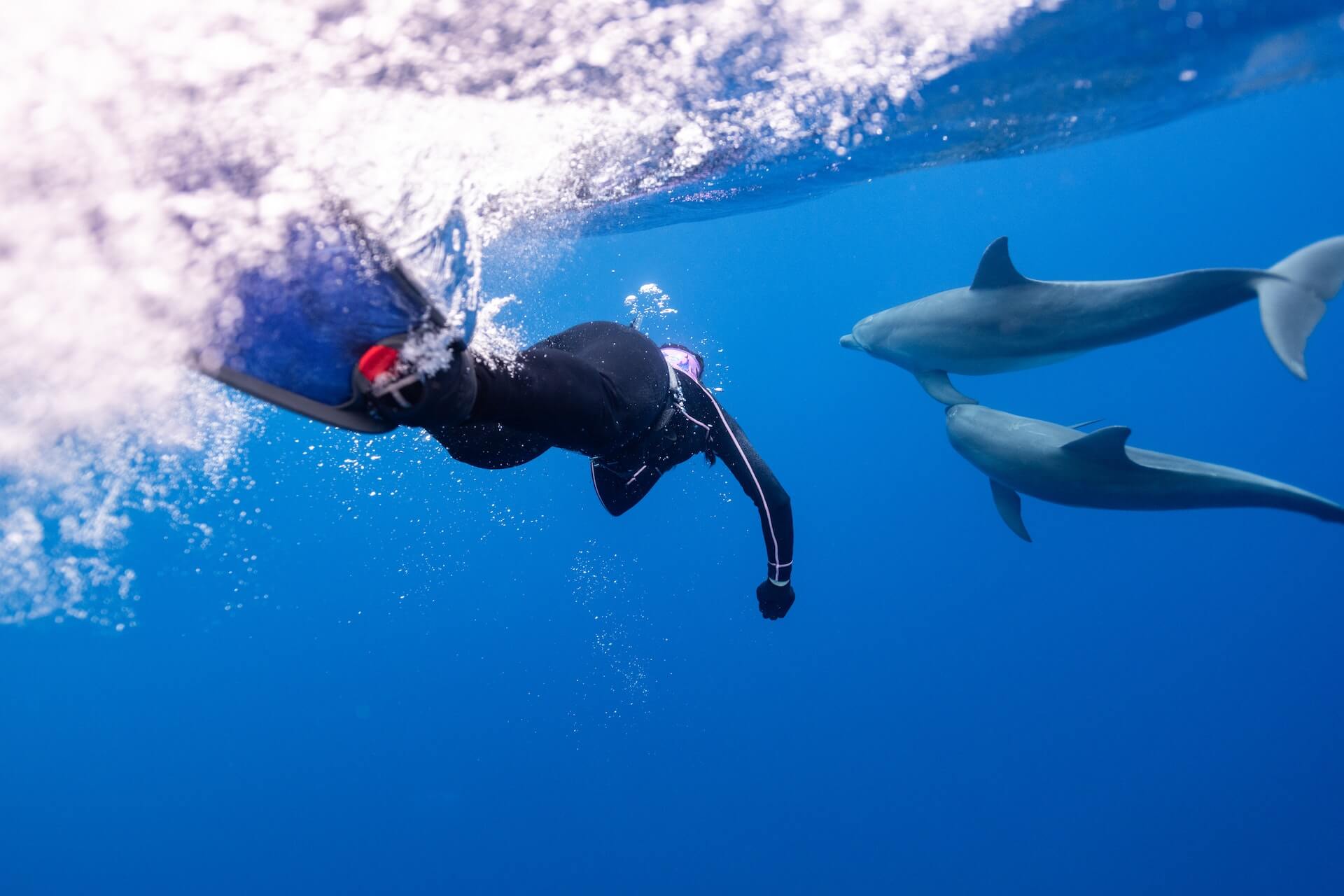Snorkeling, with its allure of vibrant marine life and serene underwater landscapes, is a bucket-list activity for many. You might’ve heard tales of weightlessness, of floating atop crystal-clear waters while watching the mesmerizing ballet of fish below.
Or perhaps you’ve already dipped your toes into the world of snorkeling and wondered, “Why did I feel exhausted afterward?” It’s a common query, even among the physically fit.
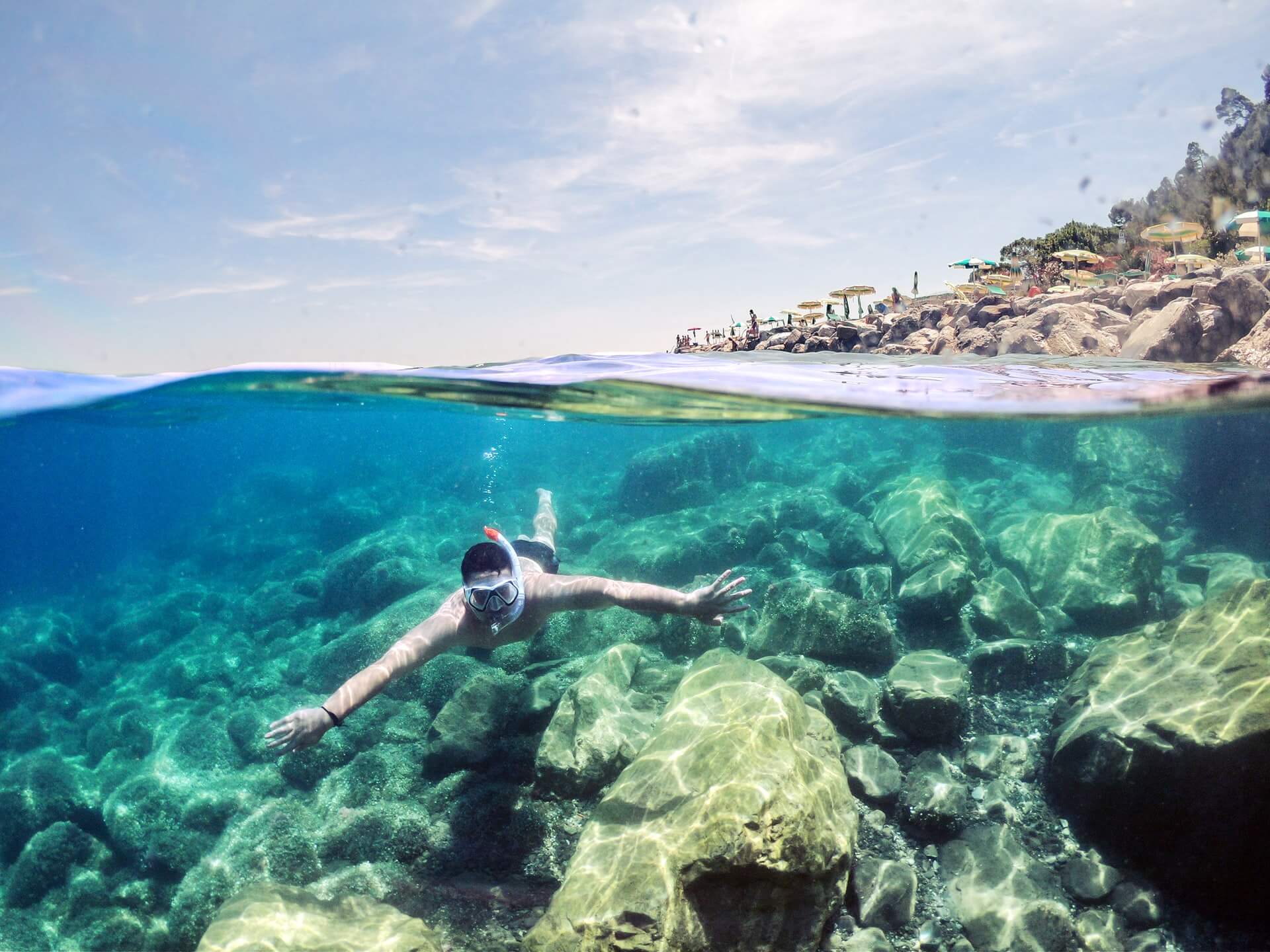
The simple answer is that our bodies encounter a series of unique challenges in the aquatic environment—challenges often underestimated by beginners. From the water’s resistance, the strong currents and waves, to the sun’s deceptive intensity and the mental focus required, snorkeling engages our bodies and minds in ways we might not immediately recognize.
Keep reading on, as we go over the top reasons why snorkeling can be so surprisingly tiring.
1. Fighting Against Water Resistance
When you move through water, you might feel like you’re pushing against something thicker than air. That’s because water is approximately 800 times denser than air. This density causes resistance, which can be thought of like an invisible barrier pushing against you as you swim. So every stroke, kick, or simple movement you make requires more effort.
This isn’t just about pushing against the water; it’s also about moving the water around your limbs. Think about the difference between waving your hand in the air versus waving it in a bucket of water. In the latter, you feel a lot more resistance. Over time, this extra effort can wear you out.
2. Dealing with Currents and Waves
The ocean isn’t just a big, still pool. It’s constantly moving due to currents and waves. Currents are like invisible rivers within the ocean that can flow in various directions. Some can pull you out to deeper water while others might push you closer to shore.
Waves, on the other hand, are the rhythmic rolling or crashing of water you see at the surface. While currents can make you feel like you’re being tugged in a certain direction, waves can toss you up and down or side to side.
When snorkeling, you might find yourself fighting against these natural motions of the ocean to stay in one place or move in the direction you want. This, too, can be very tiring, especially if you’re not used to it.
3. Non-Stop Swimming
When you’re on land, you can stop moving, sit, or stand whenever you want a break. But in the ocean, there’s no “standing still.” Even when you think you’re floating peacefully, you’re still making minor movements.
You might be adjusting your balance, keeping your face in the right position to see underwater, or just ensuring you’re staying at the right depth. Plus, the water around you is always moving because of the previously mentioned currents and waves.
This means that snorkeling isn’t just about the big, purposeful strokes you make with your arms or legs—it’s also about a ton of tiny adjustments and movements you’re probably not even fully aware of. It’s the same reason why sitting on a car, train, or plane all day can tire you out. The constant micro-adjustments require energy, which is why it’s so easy to get tired out.
4. Breathing Through a Snorkel
At first glance, a snorkel seems like a simple device—it’s just a tube you breathe through, right? But breathing through a snorkel is different from breathing on land. For one, there’s a bit of resistance.
Imagine trying to breathe through a straw; it’s a little harder than breathing without it. The longer or narrower the straw, the harder it might be. The snorkel is like a big straw. Over time, the added effort to pull air through that “straw” can strain your respiratory muscles.
There’s also the mental aspect. When using a snorkel, you have to be conscious of keeping the top of it above water and occasionally blowing out forcefully to clear out any water that might have gotten in.
5. Buoyancy Management
Buoyancy refers to the force that allows objects (including humans) to float in water. In snorkeling, managing your buoyancy is crucial for having a good experience. If you’re too buoyant, you’ll float on the surface and won’t be able to dive down to get a closer look at marine life.
If you’re not buoyant enough, you could sink or find it hard to stay afloat. To manage buoyancy, snorkelers use techniques like controlling their breath (since air in your lungs can make you float) and sometimes even wear weights.
Plus, the saltiness (or “salinity”) of the water can affect buoyancy, as saltwater is denser than freshwater and provides more lift. This constant attention to and adjustment of your position in the water is another factor that can make snorkeling tiring.
6. Enduring Cold Water
Water has an uncanny ability to affect our body temperature. It conducts heat away from our bodies much faster than air does—about 25 times quicker.
When we talk about “conducting heat,” we’re discussing how quickly heat energy is transferred from one place (or substance) to another. In this context, the heat from your body is being sapped away by the surrounding water.
Even if the water feels relatively warm at first, prolonged exposure can cool down your body more than you’d expect. As your body loses heat, it works harder to maintain its core temperature by increasing metabolic activity.
This extra work can make you feel tired faster. That’s why many snorkelers wear wetsuits in cooler waters: to slow down this heat loss and stay comfortable.
7. Scorched by the Sun
Being out in the sun exposes you to direct sunlight and its reflected rays from the water’s surface. This double exposure can intensify the sun’s effects.
Direct sunlight can lead to dehydration, as your body sweats in an attempt to cool down. Dehydration, in turn, can make you feel tired and drained. Moreover, sunburn can not only be painful but also further drain your energy as your body works to repair the damaged skin.
Beyond immediate effects, prolonged exposure to the sun’s ultraviolet (UV) rays can increase the risk of skin cancer. This is why it’s vital for snorkelers to wear sun-protective clothing, hats, and waterproof sunscreen, especially since water can magnify the effects of UV rays.
8. Lugging Around Equipment
Snorkeling equipment, particularly the fins, might not feel heavy when you first pick them up. However, once you’re in the water, the scenario changes. Your body has to adapt to the added weight and resistance that these tools provide.
Fins, for instance, increase the surface area of your feet, allowing you to push against more water and move faster. But this also means your leg muscles work harder with each kick.
Similarly, the snorkel and mask, while not significantly heavy, require adjustments in how you hold your head and breathe, adding to the overall exertion.
9. Constant Mental Focus
When you snorkel, you’re entering an environment that’s very different from what you’re used to. This requires a heightened level of awareness. You’re constantly scanning for marine life, navigating unfamiliar terrains, watching your depth, keeping track of where you started, and ensuring you don’t stray too far.
Plus, there’s the added task of managing all your equipment: making sure your mask doesn’t fog up, clearing your snorkel if it gets water in it, and so on.
This continuous need for attention and focus—combined with the wonder and excitement of exploring underwater—can be mentally exhausting. And as any athlete or scholar will tell you, mental fatigue can translate to physical tiredness.
10. The Rebound Effect
Imagine the thrill of seeing a colorful coral reef or a school of fish for the first time. Such experiences can cause a surge of adrenaline—a hormone that your body releases in response to exciting or stressful situations.
Adrenaline can make your heart race and give you a burst of energy, making you feel invincible for a short period. However, once this “rush” wears off, the aftermath can be a feeling of exhaustion, known as the crash, comedown, or rebound effect.
This is because, while adrenaline prepares your body for a “fight or flight” response, it doesn’t provide long-term energy. Once the effects fade, you might suddenly realize how tired you are, especially if the adrenaline had masked the physical exertion from all your snorkeling activities.
So, did you think that snorkeling was just about floating lazily along the water’s surface? Well, it technically is, but it’s still not as easy as it looks. But don’t let these reasons stop you from snorkeling; it may be tiring, but it’s worth it.
Sources:


